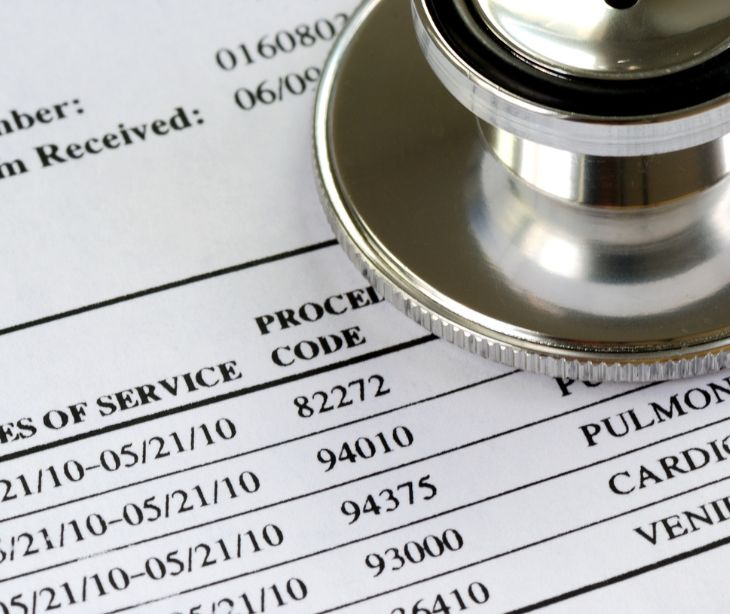2 min read
Understanding HIPAA and the Transaction and Code Sets Rule
Liyanda Tembani
August 22, 2023

HIPAA addresses the standardization of electronic healthcare transactions and code sets. These standardized processes aim to improve the efficiency, effectiveness, and confidentiality of healthcare communications.
HIPAA transactions: enhancing electronic healthcare communications
1. Healthcare claims and encounters
One of the HIPAA transactions is the healthcare claims and encounters transaction. Healthcare providers use this standardized process to submit claims for reimbursement to insurance companies. The information exchanged includes details of the services rendered, diagnosis codes, and billing information. Health plans process these claims to determine the appropriate payment to the providers.
Standardizing this transaction makes the process more streamlined and efficient, reducing errors and administrative overhead.
2. Healthcare payment and remittance advice
The healthcare payment and remittance advice transaction enables electronic payment and the transmission of remittance advice to healthcare providers. Remittance advice provides a detailed breakdown of payments made and adjustments applied. This helps providers reconcile their accounts and handle any discrepancies effectively. This standardized process expedites payment cycles, making the billing and payment system more transparent and traceable.
3. Healthcare claim status inquiry and response
The healthcare claim status inquiry and response transaction allow healthcare providers to inquire about the status of submitted claims with health plans. Providers can receive timely responses detailing the progress of the claims, any denials, or pending issues that need attention.
With real-time access to claim statuses, providers can proactively address issues that may delay reimbursements. This empowers them to make informed decisions regarding patient care and financial planning.
Related: HIPAA Compliant Email: The Definitive Guide
4. Healthcare eligibility/benefit inquiry and response
The healthcare eligibility/benefit inquiry and response transaction facilitate providers in verifying a patient's insurance coverage and eligibility for specific benefits. Before rendering services, providers can confirm a patient's coverage status and ensure that the required services are covered under their plan. This process helps reduce billing errors and improves patient satisfaction by clarifying their insurance coverage upfront.
5. Healthcare enrollment and disenrollment
The healthcare enrollment and disenrollment transaction streamline enrolling or disenrolling a member in a health plan. This standardized approach ensures that member information is accurately and securely transmitted between providers and payers.
Efficient enrollment processes result in faster patient access to healthcare services and reduced administrative burdens for healthcare organizations. Similarly, seamless disenrollment ensures patients' data is updated promptly, preventing unnecessary claims and confusion.
6. Healthcare authorization and acknowledgment
The healthcare authorization and acknowledgment transaction allows providers to request and receive authorizations for specific healthcare services. This is particularly relevant to services that may require pre-approval from insurance providers before rendering them.
By following standardized protocols for authorization, providers can ensure that necessary approvals are obtained, minimizing delays in patient care and reducing the risk of claim denials.
HIPAA Code Sets are a universal language for healthcare data
In addition to standardizing transactions, HIPAA also mandates the use of standardized code sets to represent medical and non-medical data in electronic transactions. These code sets are a universal language for exchanging healthcare information and encompass various aspects of medical data. Some key HIPAA Code Sets include:
1. International classification of diseases (ICD) codes
ICD codes classify and code diagnoses, symptoms, and medical conditions. These codes provide a standardized way to describe a patient's health condition and aid in accurate billing and data analysis.
2. Current procedural terminology (CPT) codes
CPT codes identify medical procedures and services provided by healthcare professionals. They enable clear communication between providers and payers about the services rendered.
3. Healthcare common procedure coding system (HCPCS) codes
HCPCS codes are used for additional medical procedures and services not covered by CPT codes. They are particularly relevant for products, supplies, and services that may not have specific CPT codes.
4. National drug code (NDC) numbers
NDC numbers identify specific medications and drugs. These codes help healthcare providers accurately document the medications prescribed to patients, aiding in drug utilization review and patient safety.
HIPAA's transactions and code sets help to streamline healthcare communication and ensure the secure exchange of patient information. These standardized processes not only improve the efficiency of electronic healthcare transactions but also enhance data accuracy, patient care, and data security.
Subscribe to Paubox Weekly
Every Friday we'll bring you the most important news from Paubox. Our aim is to make you smarter, faster.




